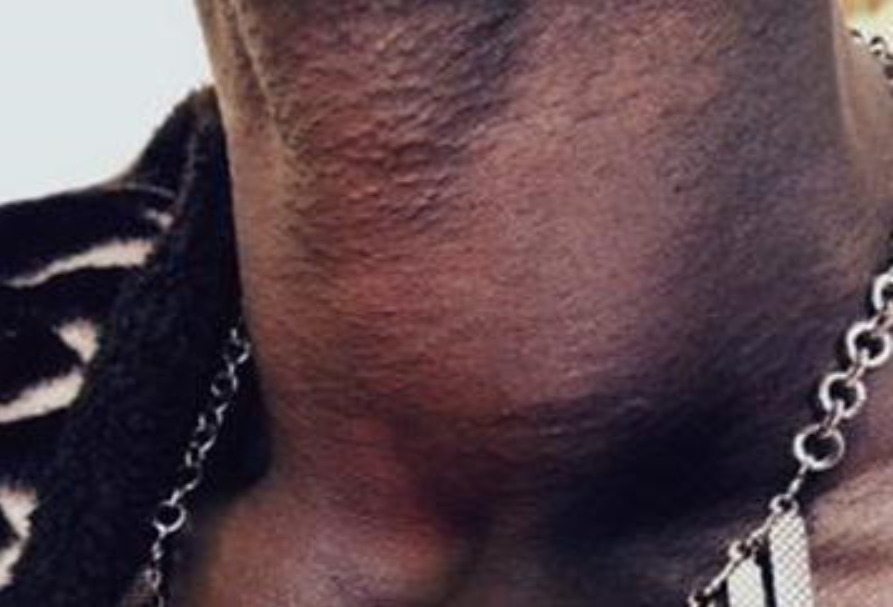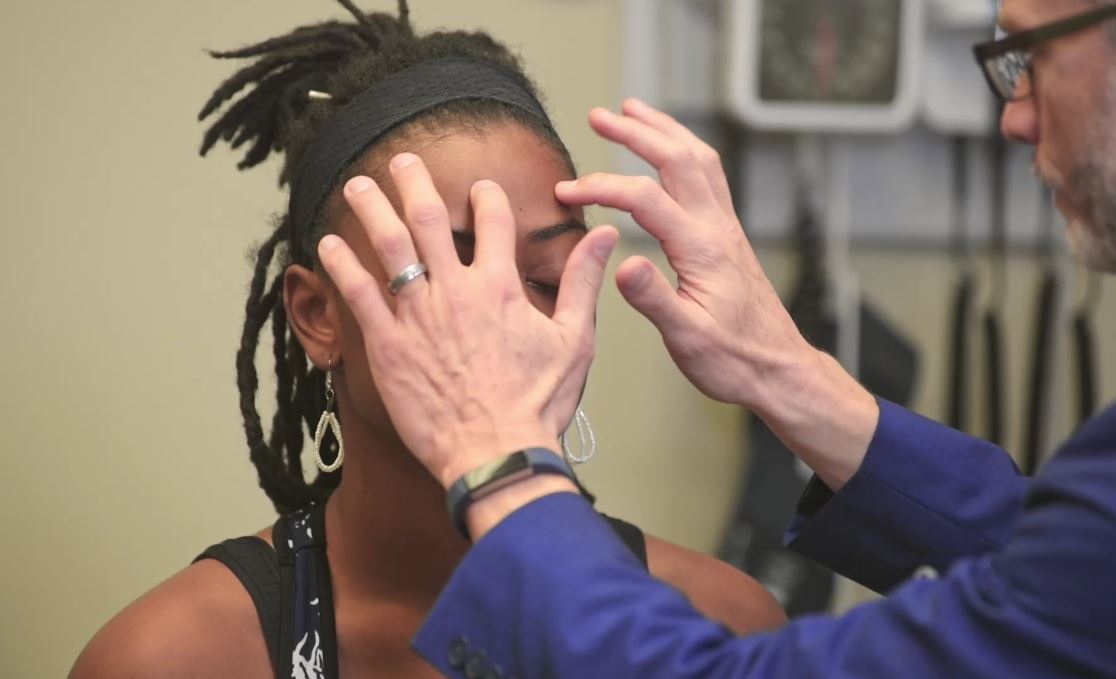Playlist
Show Playlist
Hide Playlist
Examination of the Thyroid
-
Reference List Physical Examination.pdf
-
Download Lecture Overview
00:01 So next stuff, we're going to talk about the thyroid exam. 00:04 And not only we're going to look at the thyroid itself, but we're also going to look for some of those subtle manifestations of hyper and hypothyroidism. 00:12 But first off, let's reorient ourselves to the anatomy of the thyroid gland itself. 00:17 Oftentimes, people get mixed up about the location of the thyroid because they get hung up on the thyroid cartilage. 00:22 So let's take a look at the thyroid cartilage. 00:24 Shawn, if you can just tilt your head up a little bit. 00:26 His "Adam's apple" is this prominent cartilaginous shape right here. 00:32 At the very top of it is this thyroid cartilage notch. 00:36 And then the ridge of it there is the thyroid cartilage itself. 00:39 And while it's called the thyroid cartilage, it turns out the thyroid gland is really not on top of the thyroid cartilage. 00:46 Instead, I want you to walk down that ridge until you feel a little gap. 00:50 And that's the gap between the thyroid cartilage and then much smaller cricoid cartilage just inferior to that. 00:57 Typically, it's about a centimeter or a half a centimeter distal to the cricoid cartilage is where you'll actually find your thyroid gland. 01:06 Starting with the isthmus, which is the section of thyroid gland between the two lobes. 01:11 And then lateral to that is of course, where you'll find the two lobes of the thyroid. 01:15 For some patients, the isthmus and the thyroid gland itself is buried 50% of it or even more of it deep to the sternal notch. 01:24 And so it can become very difficult to palpate. 01:26 Having a patient lift their head up can sometimes make the thyroid gland a bit more prominent. 01:32 That being said, it also stretches the skin and sometimes can obscure the bulge of the thyroid as well. 01:38 In his case, I can clearly feel his cricoid notch here, and therefore, his isthmus is around here and the thyroid gland itself is here. 01:49 When palpating the thyroid gland, there's several specific things you're looking for. 01:53 You're trying to see if there's nodularity in the thyroid or asymmetry, you're trying to see if there's firmness in the thyroid, which may be indicative particularly with a firm thyroid it may suggest Hashimoto's with lymphocytic replacement, and fibrous replacement of the gland itself. 02:09 or a more soft full thyroid may be indicative of something like Graves' disease. 02:16 To further make sure that what you're palpating if you do feel a nodule, you can have the patient take a sip of water and swallow because since the thyroid gland is attached to the cartilaginous structures in the neck. 02:29 When he swallows, they shouldn't be lifted up, they should come up with his swallow. 02:34 As opposed to something that's in the skin, like a thyroglossal cyst, for example, it's going to stay where it is, or move very minimally up and down. 02:41 So let's have him take a sip of water. 02:47 Thank you. 02:49 I'm going to get my hands on his neck hold that bolus of water. 02:54 Great. 02:55 And so I could still feel his thyroid gland, I could feel this tissue move up and down underneath my fingertips. 03:01 You'll note by the way that I tend to not examine patients like this from behind. 03:06 And this is based on the idea of trauma informed physical exam where you really don't want to stand behind somebody and be in the position as if you're strangling them. 03:15 Some folks have a lot of trauma history that may come up and subsequent is history taking. 03:19 It's generally just something to be avoided if you can help it to stand behind somebody and have them in a chokehold position. 03:24 So I stand from the side like this and can achieve the same thing with my fingers without having to worry about that. 03:32 Okay, so let's move on to start looking for some of the other features of the thyroid. 03:37 You can actually auscultate the thyroid gland. 03:39 And folks who have Graves' disease may have evidence of a thyroid brewery, which is this increased blood flow due to a very hyperactive thyroid. 03:46 So that's very simply done on either side. 03:52 And rather than the simple carotid pulsation, which is very regular, you're listening for the sound of a rush of turbulent blood. 04:01 In this case, it's essentially a flow murmur or brewery through the thyroid gland. 04:10 In addition, whenever you're examining the thyroid if you're concerned about malignancy, for example, you're going to want to perform a lymph node exam in the same area and the lymph node exam in the neck is going to be covered in a subsequent lecture.
About the Lecture
The lecture Examination of the Thyroid by Stephen Holt, MD, MS is from the course Examination of the Head and Neck Region.
Included Quiz Questions
A diffusely enlarged and firm thyroid is most suggestive of what diagnosis?
- Hashimoto's disease
- Graves' disease
- Toxic multinodular goiter
- Toxic adenoma
- Medullary carcinoma
What does a bruit heard on auscultation over the thyroid suggest?
- Graves' disease
- Nontoxic goiter
- Hashimoto's disease
- Medullary carcinoma
- Subacute thyroiditis
Customer reviews
5,0 of 5 stars
| 5 Stars |
|
5 |
| 4 Stars |
|
0 |
| 3 Stars |
|
0 |
| 2 Stars |
|
0 |
| 1 Star |
|
0 |





